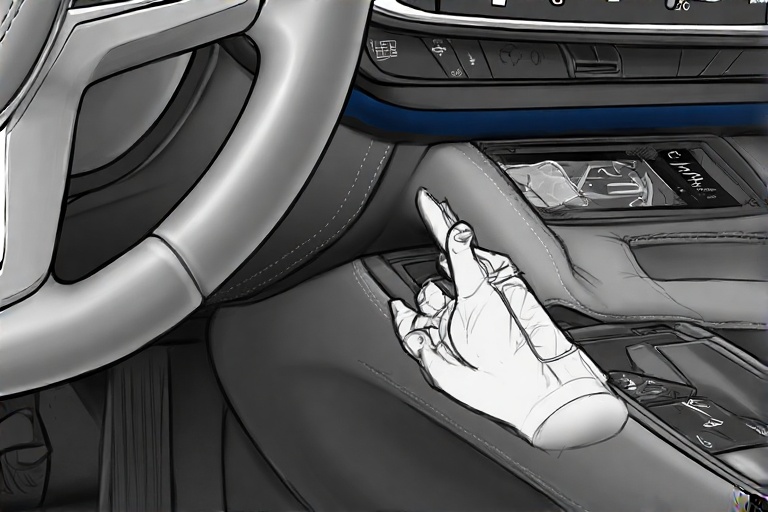
The wireless charging tray 849900 in BMW vehicles is a convenient feature, but it can sometimes feel like a space-hogging nuisance or cause issues like overheating phones or damaging NFC chips. If you’re frustrated with the limited space in your center console or suspect the tray is affecting your device’s functionality, learning how to remove the wireless charging tray 849900 – BMW can be a game-changer. This guide dives deep into the step-by-step process, ensuring you can safely and effectively remove the tray without damaging your vehicle’s interior. Whether you drive a 2023-2025 BMW model or an earlier one with this tray, we’ll provide clear, student-friendly instructions backed by thorough research to help you reclaim your console space and avoid potential device issues. Let’s get started with a straightforward approach to tackle this task!
Why Remove the Wireless Charging Tray 849900 – BMW?
There are several reasons you might want to remove the wireless charging tray 849900 – BMW. For one, the tray can take up significant space in the center console, making it hard to store items like sunglasses, wallets, or keys. Some BMW owners, like those with a 2017 M3, have noted that the tray’s spring-loaded jaw is too small for larger phones, such as the Samsung Galaxy S7 Active, rendering it impractical. Additionally, concerns about electromagnetic fields (EMF) potentially demagnetizing credit cards or damaging phone components, like the NFC chip in iPhone 15 models, have been reported. Overheating is another issue, with phones getting excessively warm during charging, which can interrupt the process or harm the device. By learning how to remove the wireless charging tray 849900 – BMW, you can address these problems, create more storage space, and protect your devices from potential damage.
Tools Needed to Remove the Wireless Charging Tray 849900 – BMW
Before you begin the process of how to remove the wireless charging tray 849900 – BMW, gather the right tools to make the job smooth and safe. You’ll need a T20 Torx screwdriver for removing screws, a plastic pry tool to avoid scratching your BMW’s interior, and a pair of pliers for gently lifting the tray. A soldering iron may be required if your tray has a soldered antenna coax wire, as seen in some models like the 2017 M3. A wire cap is also handy to secure loose wires after disconnection. Having a clean, well-lit workspace is crucial to avoid losing small parts. These tools are easy to find at hardware stores or online, and they ensure you can remove the wireless charging tray 849900 – BMW without damaging your vehicle’s sleek interior. Double-check your tool kit before starting to avoid interruptions during the process.
Step-by-Step Guide to Remove the Wireless Charging Tray 849900 – BMW
Step 1: Prepare Your Vehicle
To safely remove the wireless charging tray 849900 – BMW, start by parking your vehicle on a flat surface and turning off the ignition to avoid any electrical issues. Engage the parking brake for added safety. Clear out the center console, removing any items like phones, keys, or wallets. Ensure you’re working in a well-lit area, as small components can be hard to see. Disconnect the battery to prevent any electrical shorts, especially since you’ll be dealing with wiring. This step is critical to protect both you and your vehicle’s electronics while you work on removing the wireless charging tray 849900 – BMW. If you’re unsure about battery disconnection, consult your BMW owner’s manual for model-specific instructions.
Step 2: Access the Center Console
Next, you’ll need to access the area where the wireless charging tray 849900 – BMW is located, typically in the center console. Use a plastic pry tool to gently lift the trim around the console. Start near the gear selector or cup holders, as these areas often provide easier access. Be patient to avoid scratching the interior. In some BMW models, like the 2019 i3, the tray is housed in the armrest, so you may need to lift the armrest panel. Look for clips or screws holding the trim in place. If screws are present, use the T20 Torx screwdriver to remove them carefully. Store all screws and clips in a safe place. This step ensures you can reach the wireless charging tray 849900 – BMW without damaging the surrounding panels.
Step 3: Unseat the Charging Tray
Once the console is open, locate the wireless charging tray 849900 – BMW. In many models, it’s a snap-mounted unit. Grip the front edge of the tray, often where the phone clamp is, and use pliers to gently pull upward. The tray should pop out of its snap mount with moderate force. Be cautious not to yank too hard, as there are electrical connections beneath. In some cases, like the 2017 M3, the tray may have a soldered antenna coax wire. If so, use a soldering iron to carefully detach the wire. This step is crucial to free the wireless charging tray 849900 – BMW from its mounting without breaking any components or leaving loose parts behind.
Step 4: Disconnect Electrical Connections
After unseating the tray, you’ll see one or two electrical connectors attached to the wireless charging tray 849900 – BMW. Most models have a simple plastic connector with multiple wires that pulls out with moderate force. Gently wiggle it to disconnect without damaging the wires. If there’s a soldered coax wire, as mentioned earlier, heat the solder joints with a soldering iron to free the connection. Once disconnected, secure the loose wires with a wire cap and tuck them into the console’s access hole to prevent rattling. This step ensures the wireless charging tray 849900 – BMW is fully detached and the console remains tidy and functional.
Step 5: Reassemble the Console
With the wireless charging tray 849900 – BMW removed, it’s time to put everything back together. Carefully reattach the console trim or armrest panel, ensuring all clips and screws are aligned. Use the T20 Torx screwdriver to secure any screws you removed earlier. Double-check that no wires are pinched during reassembly, as this could cause electrical issues. Reconnect the vehicle’s battery and test the console to ensure everything functions correctly. The removal of the wireless charging tray 849900 – BMW should leave you with a deeper, more spacious console, perfect for storing larger items without worrying about EMF or overheating issues.
Precautions to Take When Removing the Wireless Charging Tray 849900 – BMW
Safety is key when learning how to remove the wireless charging tray 849900 – BMW. Always disconnect the vehicle’s battery before starting to avoid electrical shocks or short circuits. Use plastic pry tools instead of metal ones to prevent scratches or damage to your BMW’s interior. Work in a clean, organized space to avoid losing small screws or clips. If you encounter soldered connections, handle the soldering iron with care to avoid burns or damage to other components. Store the removed tray in a safe place in case you or a future owner want to reinstall it. Finally, consult your vehicle’s manual for model-specific details, as tray designs may vary across BMW models like the X3, X5, or i4.
Benefits of Removing the Wireless Charging Tray 849900 – BMW
Removing the wireless charging tray 849900 – BMW offers several advantages. First, it frees up valuable space in the center console, allowing you to store larger items like sunglasses, wallets, or even a small notebook. This is especially helpful in models like the 2017 M3, where the tray limits console space. Second, it eliminates the risk of EMF damaging credit cards or phone components, such as the NFC chip in iPhone 15 models. Third, it prevents phone overheating, which can disrupt charging or harm your device’s battery. Finally, removing the tray can simplify your vehicle’s interior, reducing clutter and making it easier to use wired charging solutions, which are often faster and more reliable. This upgrade can enhance your driving experience significantly.
Common Issues with the Wireless Charging Tray 849900 – BMW
The wireless charging tray 849900 – BMW, while innovative, has its share of problems. Many owners report that the tray charges phones slowly or inconsistently, sometimes only maintaining the battery level rather than increasing it, especially when using power-hungry features like CarPlay. Overheating is a frequent complaint, with phones like the iPhone 13 or Samsung S21 getting excessively hot, which can pause charging or damage the device. In 2023, reports surfaced that the tray could disable the NFC chip in iPhone 15 models, rendering features like Apple Pay unusable. Additionally, the tray’s design can be too small for larger phones, and its placement in the console limits storage space. These issues make learning how to remove the wireless charging tray 849900 – BMW a practical solution for many owners.
Alternatives to the Wireless Charging Tray 849900 – BMW
If you decide to remove the wireless charging tray 849900 – BMW, you’ll need alternative charging solutions. A wired USB charger is a reliable option, often providing faster and more efficient charging than wireless pads. Many BMW models have USB ports in the console or dashboard, perfect for this purpose. Another option is a wireless charging phone holder, which mounts on your dashboard or windshield, keeping your phone visible for navigation while charging. These holders are affordable, ranging from $50 to $100, and are compatible with most Qi-enabled devices. You could also opt for a portable power bank for on-the-go charging. Each of these alternatives avoids the overheating and space issues associated with the wireless charging tray 849900 – BMW, offering flexibility and convenience.
FAQs About How to Remove the Wireless Charging Tray 849900 – BMW
1. Can I reinstall the wireless charging tray 849900 – BMW after removing it?
Yes, you can reinstall the wireless charging tray 849900 – BMW if you keep the tray and its connectors intact. Simply reverse the removal process: reconnect the wires, snap the tray back into place, and reassemble the console. Store the tray safely to avoid damage in case you or a future owner want to restore it.
2. Will removing the wireless charging tray 849900 – BMW void my vehicle’s warranty?
Removing the wireless charging tray 849900 – BMW is unlikely to void your vehicle’s warranty, as it’s a non-critical component. However, if you damage other parts during the process, such as wiring or the console, it could lead to warranty issues. Proceed carefully and consult your dealer if you’re unsure.
3. Does removing the wireless charging tray 849900 – BMW affect the digital key function?
In some BMW models, the wireless charging tray 849900 – BMW doubles as an NFC tray for the digital key. Removing it may disable this feature. Check your owner’s manual to confirm if your vehicle relies on the tray for the digital key before proceeding with removal.
4. How long does it take to remove the wireless charging tray 849900 – BMW?
The process to remove the wireless charging tray 849900 – BMW typically takes 20-30 minutes, depending on your experience and the vehicle model. Models with soldered connections, like the 2017 M3, may take slightly longer due to the soldering step. Working slowly and carefully ensures a smooth removal.
5. Can I replace the wireless charging tray 849900 – BMW with a different model?
Yes, you can replace the wireless charging tray 849900 – BMW with an aftermarket tray or a different BMW part number, such as 84-10-5-A3E-813, which some owners report works without activation. Ensure the replacement is compatible with your vehicle model and supports Qi charging if needed.
Conclusion
Learning how to remove the wireless charging tray 849900 – BMW is a practical solution for drivers who want more console space, faster charging options, or protection for their devices. By following the steps outlined—preparing your vehicle, accessing the console, unseating the tray, disconnecting wires, and reassembling—you can complete the task in under 30 minutes with basic tools. The process addresses common issues like overheating, limited space, and potential damage to phone components, making your BMW’s interior more functional. Whether you’re driving an X3, X5, or i4, this guide ensures a safe and effective removal. If you encounter challenges or have model-specific questions, consult your BMW dealer or a professional technician to ensure the best outcome for your vehicle.


